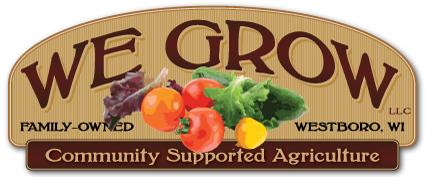 We love eating the first veggies from the spring garden, fresh lettuce being the ultimate after a long winter! Enjoy the greens while they last, because when the heat turns on, the lettuce turns bitter.
We love eating the first veggies from the spring garden, fresh lettuce being the ultimate after a long winter! Enjoy the greens while they last, because when the heat turns on, the lettuce turns bitter.
This week, it is with great excitement – and anxiety – that we prepare your first farm shares. We are learning quickly that there is no time to waste in the spring. This week, we are getting all the warm weather transplants in the ground, doing more direct seeding and trellising cukes and peas. We lost most of our second crop of radishes to root worms. We’re working on number three now with our fingers crossed.
We’ve learned a lot about farming in a high tunnel this spring. We probably under-utilized this tool, but have more plans for this fall and beyond when the tomatoes and cucumbers have run their course. We did not realize how well the early greens and radishes would do inside. But alas, we are catching up and look forward to the things to come. Rest assured that when the harvest season is in full swing, our farm members will reap the rewards.
Again, we thank you for taking stake in our fledgling farm adventure. Please bear with us as we stumble through our first CSA season, dealing with freshly turned ground and going thru organic certification. Let us know if you have any questions about what is in your first farm share and please follow We Grow LLC on Facebook if you can. We encourage you to use this platform to let other farm members know what you are doing with your produce. It’s a great way to share ideas and we all benefit.
With dirt under our nails,
Eric & Rebecca
Week One 2015 Newsletter
Click on the link above to view this week’s newsletter in it entirety including a list of what’s in your crate and what we know about each of these items. Plus, a quote from our youngest farmhands.
Recipes
Rhubarb Sour Cream Cake Recipe
Rhubarb Cream Cheese Bar Recipe
















